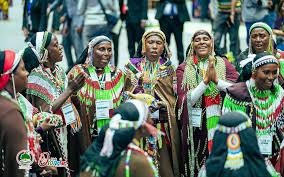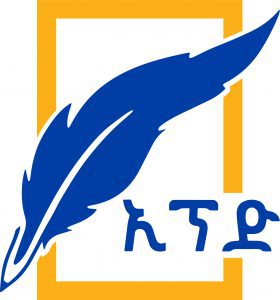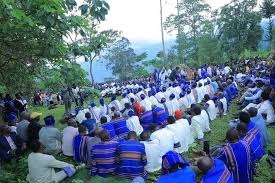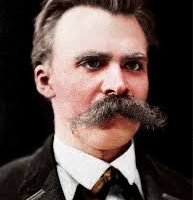
Ethiopia, known for its ancient history and cultural heritage, provides an ideal backdrop for the East African Cultural Fair. The fair typically features various activities, including traditional music and dance performances, art exhibitions, culinary showcases, and storytelling sessions.
Participants from countries such as Kenya, Uganda, Tanzania, Rwanda, and South Sudan have come together to share their unique cultural identities and foster mutual understanding.
One of the most captivating aspects of the fair is the live performances throughout the event. Traditional dancers adorned in vibrant attire enchant audiences with their rhythmic movements, while musicians play instruments that resonate with the cultural narratives of their respective nations. These performances not only entertain but also educate attendees about the historical and social contexts of the various art forms.
Food plays a vital role in cultural exchange, and the fair features a culinary segment where visitors can sample an array of traditional dishes. Each country presents its signature delicacies, allowing attendees to experience the flavors of East Africa. This gastronomic journey fosters appreciation for the region’s culinary diversity and encourages dialogue around food as a cultural connector.
The East African Cultural Fair is more than just a celebration of culture; it is a vital instrument of cultural diplomacy. In a region marked by historical tensions and socio-political challenges, the fair serves as a unifying force. By bringing together diverse cultures, it promotes dialogue and understanding, fostering peaceful relations among nations.
Cultural diplomacy through events like the East African Cultural Fair helps to build bridges between countries. It provides a platform for collaboration and partnership, allowing nations to explore shared interests and address common challenges. The fair encourages collaboration in areas such as tourism, education, and the arts, ultimately contributing to regional stability and development.
The fair also plays a significant role in inspiring young people. By exposing them to a variety of cultures and traditions, it fosters a sense of pride in their heritage while also encouraging openness to other cultures. Educational workshops and programs are often integrated into the fair, providing youth with opportunities to learn about cultural preservation and the importance of diversity.
The East African Cultural Fair in Ethiopia stands as a testament to the power of cultural diplomacy. By celebrating the rich tapestry of East African cultures, the fair not only entertains but also educates and inspires.
It serves as a reminder of the importance of cultural exchange in fostering peace, understanding, and collaboration in a diverse world. As nations come together to share their stories and traditions, they pave the way for a more harmonious future in the East African region.
The second edition of the East Africa Art and Culture Festival will strengthen ties, promote cooperation in trade, tourism, and technology, and emphasize shared languages and cultures, said the official.
Running from March 20 to March 24, 2025, East Africa Art and Culture Festival is underway, under the theme “Art and Culture for Regional Integration.”
Ambassador Dina Mufti told the Ethiopian Press Agency all the East African countries participating in the festival are showcasing their culture. This is to further strengthen the ties between them, to cooperate culturally, which mean they will cooperate economically, trade, tourism, and technology.
Therefore, it is very important to demonstrate such relations, the work of celebrating culture promptly, he added.
Lelise Dhugaa, Oromia Tourism Commission Commissioner, on her part said that this festival is a beautiful representation of the cultural traditions, music, dress, and arts of East Africa. This will be of greater political importance as countries become more integrated economically and socially.
We share languages with East African countries, for example, Afaan Oromo is spoken in Kenya, and Somali is also the language of the Horn. It was stated that the East African regions have a common language and culture. Recently, Kenyans celebrated the departure of Aba Gada from Oromia, she underscored.
As to Commissioner, roads are being built, the Ethiopian Real Way is being built, the Lamo Corridor is about to be built, which will reach the Indian Ocean through Moyale and Borena Negele, and in the meantime, it will allow us to integrate language, culture and economy. Such festivals have contributed significantly to the growth of conference tourism.
The more we know each other, the better we work together and the better we grow and develop together.
Lucy Uto, from the Uganda delegation, said “If we look at the regional integration of East African communities, this event is the very important component of unit, peaceful coexistence, reconciliation, economic development and opening up opportunities in the East African community”.
In this festival, we are going to learn from each other, entertain each other, and build relationships that can foster as to move beyond Uganda. The festival makes us move beyond East Africa and up to the African level, she emphasized.
In an increasingly interconnected world, diplomacy is no longer limited to political negotiations and economic agreements. Cultural diplomacy—the use of cultural exchanges to foster mutual understanding and strengthen international relationships—has emerged as a vital tool for Africa. As the continent navigates globalization, economic development, and geopolitical challenges, cultural diplomacy offers a powerful means to promote Africa’s identity, influence global narratives, and build sustainable partnerships.
Cultural diplomacy involves the exchange of ideas, values, traditions, and artistic expressions between nations and peoples. It is a form of soft power that allows countries to shape international perceptions and foster goodwill through cultural engagements such as music, art, film, education, and historical narratives.
Unlike traditional diplomacy, which often focuses on government-to-government relations, cultural diplomacy engages a wide range of actors, including artists, scholars, entrepreneurs, and civil society organizations.
For decades, Africa has been misrepresented in global media, often portrayed through the lens of poverty, conflict, and underdevelopment. Cultural diplomacy provides an opportunity for African nations to reshape their global image, highlighting the continent’s rich heritage, creativity, and innovation. Through African music, literature, film, and fashion, the world is beginning to appreciate the depth and diversity of African cultures.
Regional initiatives such as the African Continental Free Trade Area (AfCFTA) can benefit from cultural diplomacy by reinforcing a sense of common identity among African nations. Events like the Pan-African Film and Television Festival of Ouagadougou (FESPACO) and the Lake of Stars Festival in Malawi create spaces for African artists and audiences to connect, strengthening cultural ties and regional cooperation.
Cultural diplomacy is not just about soft power—it also has tangible economic benefits. The creative and cultural industries contribute significantly to employment and economic growth. According to UNESCO, Africa’s cultural and creative industries generate billions of dollars annually and employ millions of young people.
By promoting African culture globally, governments can attract tourism, investment, and international collaborations. Countries like South Africa, Kenya, and Ghana have leveraged their vibrant cultural sectors to boost tourism and attract foreign direct investment. Ghana’s “Year of Return” initiative in 2019, which invited the African diaspora to reconnect with their roots, generated over $1.9 billion in economic activity.
Cultural diplomacy allows African nations to engage with the world on their own terms, strengthening diplomatic ties beyond political and economic agreements. Many countries, including China, France, and the United States, have used cultural diplomacy to deepen their relationships with African nations.
Similarly, African countries can use cultural diplomacy to diversify their global partnerships. By promoting African languages, traditions, and artistic expressions abroad, African nations can forge deeper connections with regions such as Latin America, the Caribbean, and Asia, where there are historical and cultural ties.
Encourage cross-border cultural projects, festivals, and exchange programs to foster unity and shared identity. Cultural diplomacy is a powerful tool for Africa’s transformation. By leveraging its rich cultural heritage, Africa can enhance its global influence, strengthen regional unity, create economic opportunities, and build meaningful international partnerships. As African nations continue to assert themselves on the global stage, cultural diplomacy will be essential in shaping a future where the continent’s voice is heard, respected, and celebrated.
BY LAKACHEW ATINAFU
THE ETHIOPIAN HERALD WEDNESDAY 26 MARCH 2025





